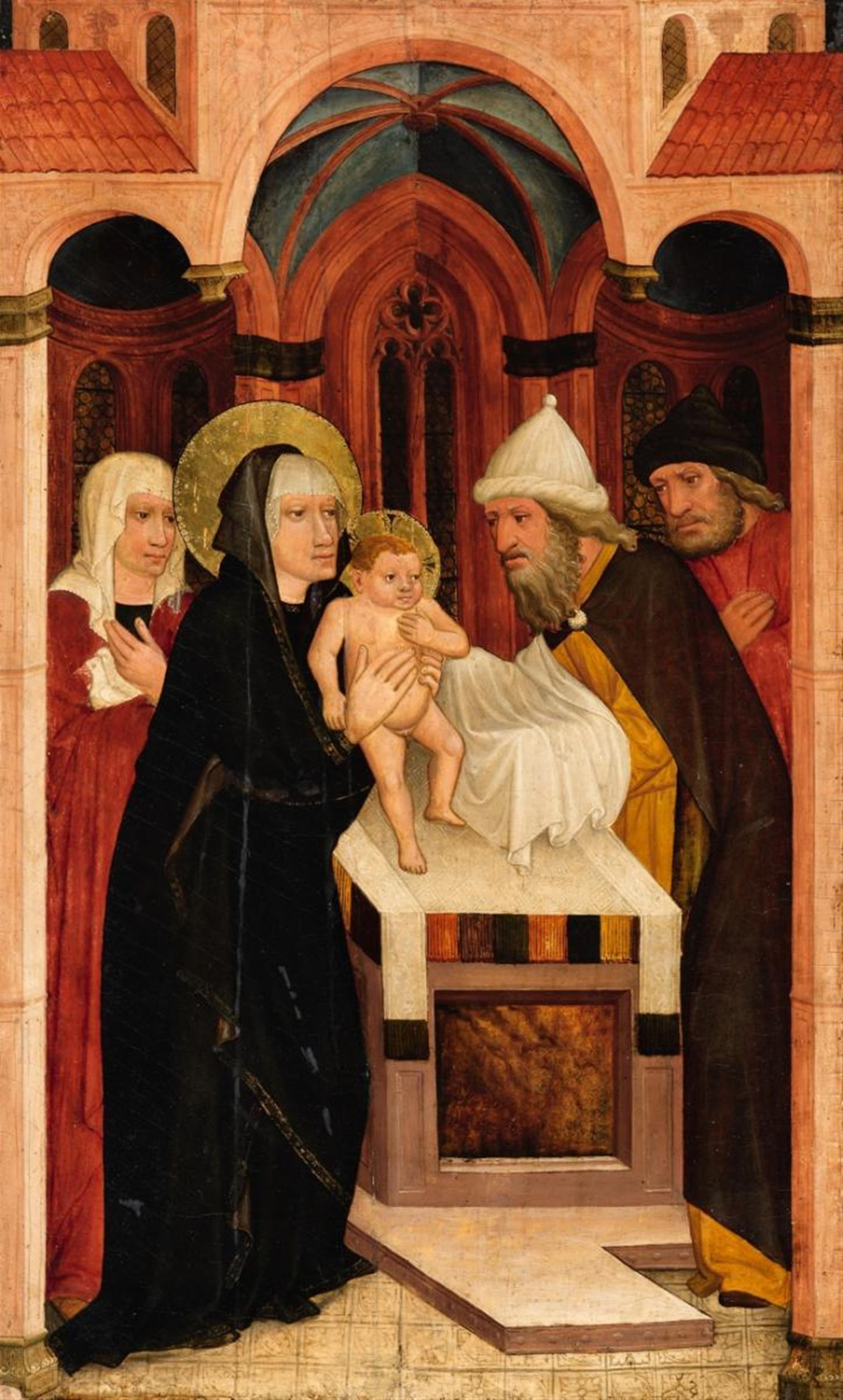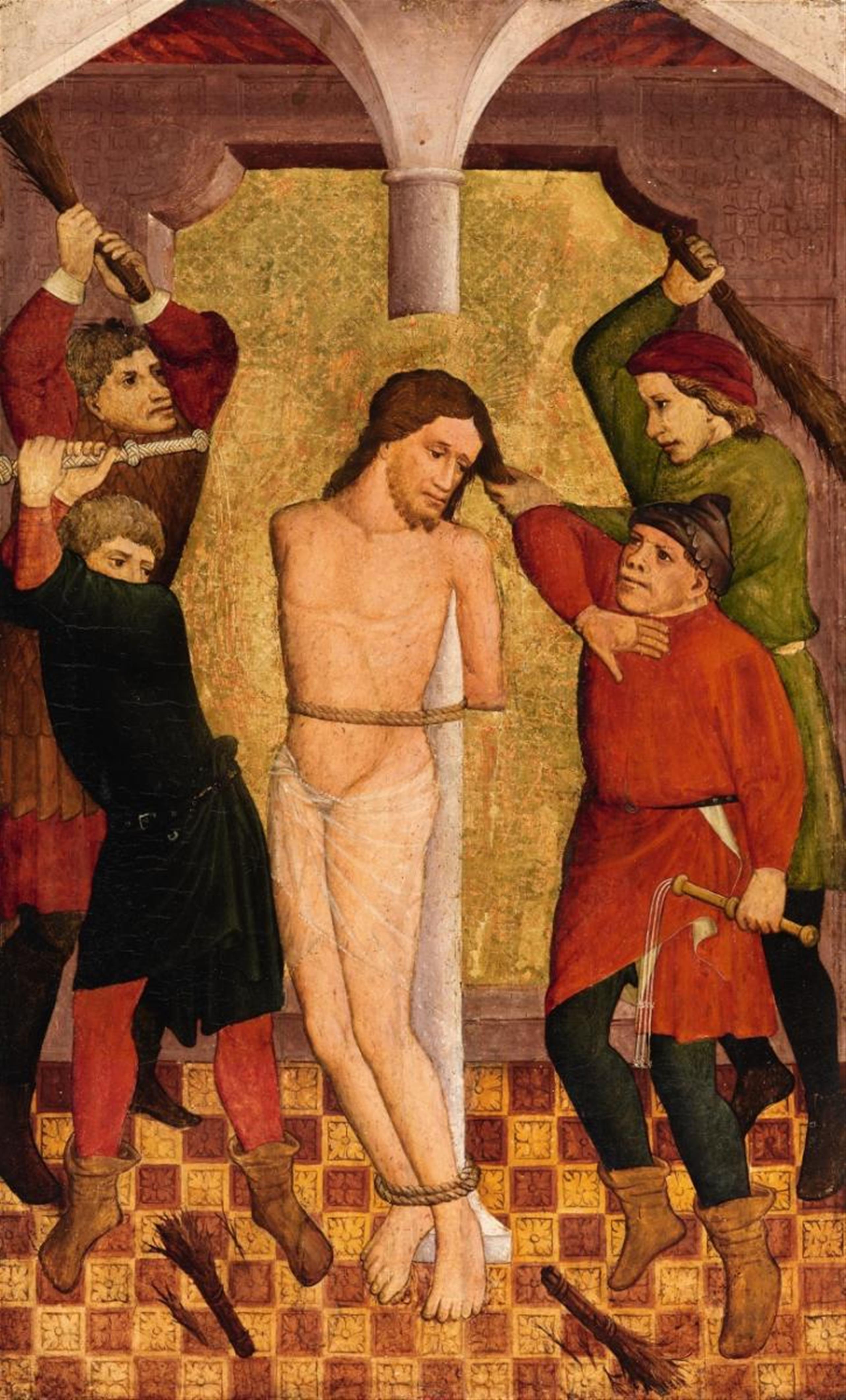Master of the Offering, studio of
The Presentation of Jesus at the Temple The Flagellation of Christ
Egg tempera on panel (parquetted). Each 79 x 47 cm.
These two corresponding panels probably originate from a large hinged altarpiece depicting the life of Christ. The Master of the Offering was one of the most important protagonists of art in Austria during the first half of the 15th century. His name originates from a panel depicting the Presentation of Jesus at the Temple now kept in the Stift Heiligenkreuz in Lower Austria.
The Stift Klosterneuburg also owns a series of six scenes from the Life of the Virgin by the same master, two of which were painted by a workshop assistant. These two panels are the work of this same apprentice, whose style is described by Stange (ibid.): “He gave his figures a slimmer, smoother and more Gothic form, and characterised both the people and the architecture more realistically. However, the figures are shown in poor perspective, which gives the architecture more of a decorative than a spatial character.”
Provenance
Cologne art dealership, 1976. - Private collection, Rhineland. - 771th Lempertz auction, Cologne, 15.5.1999, lot 1092. - Private collection, Rhineland (on loan to the Diözesanmuseum Freising until 2014).
Literature
Alfred Stange: Deutsche Malerei der Gotik. vol. 11, München/Berlin 1961, p. 23.




